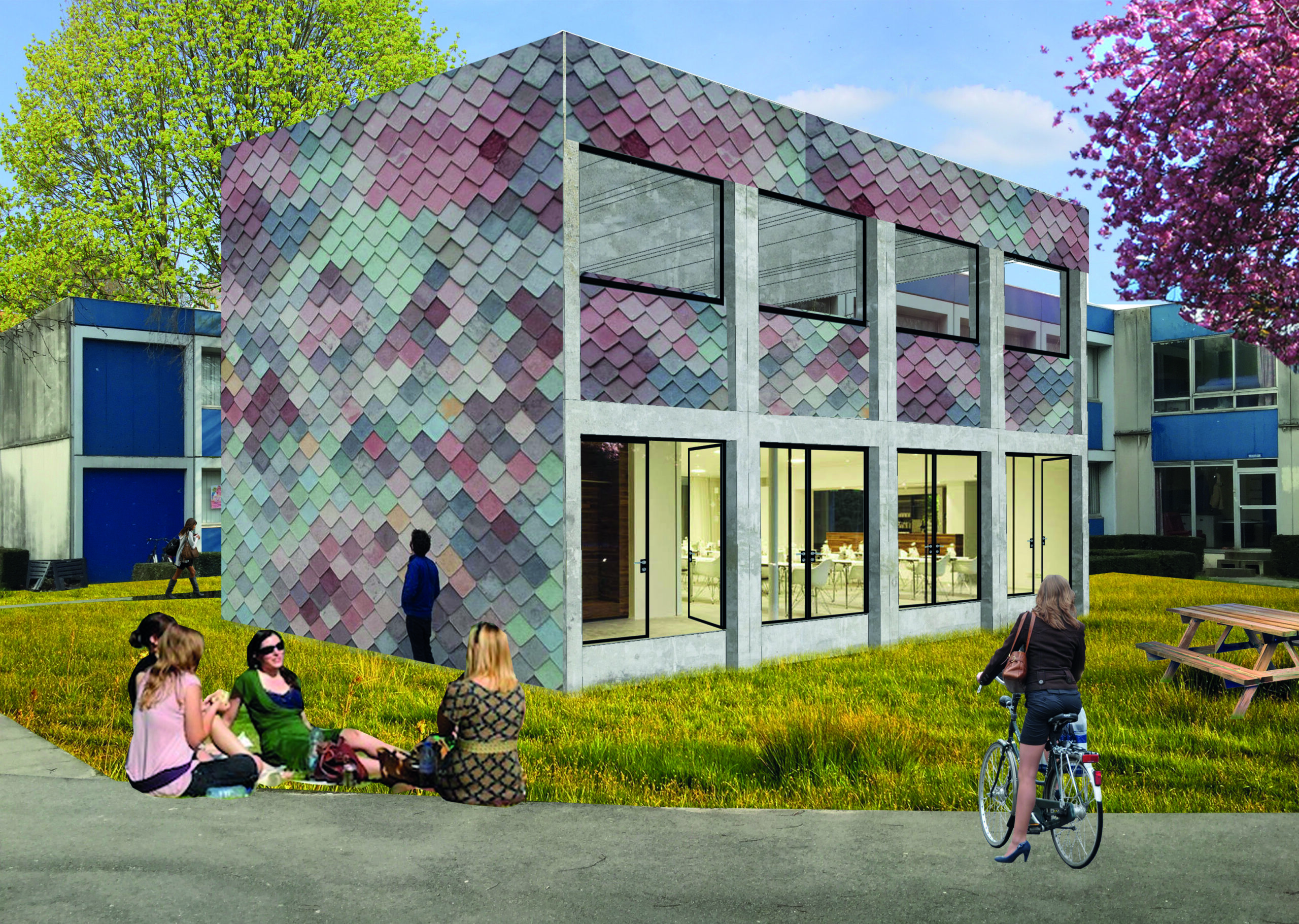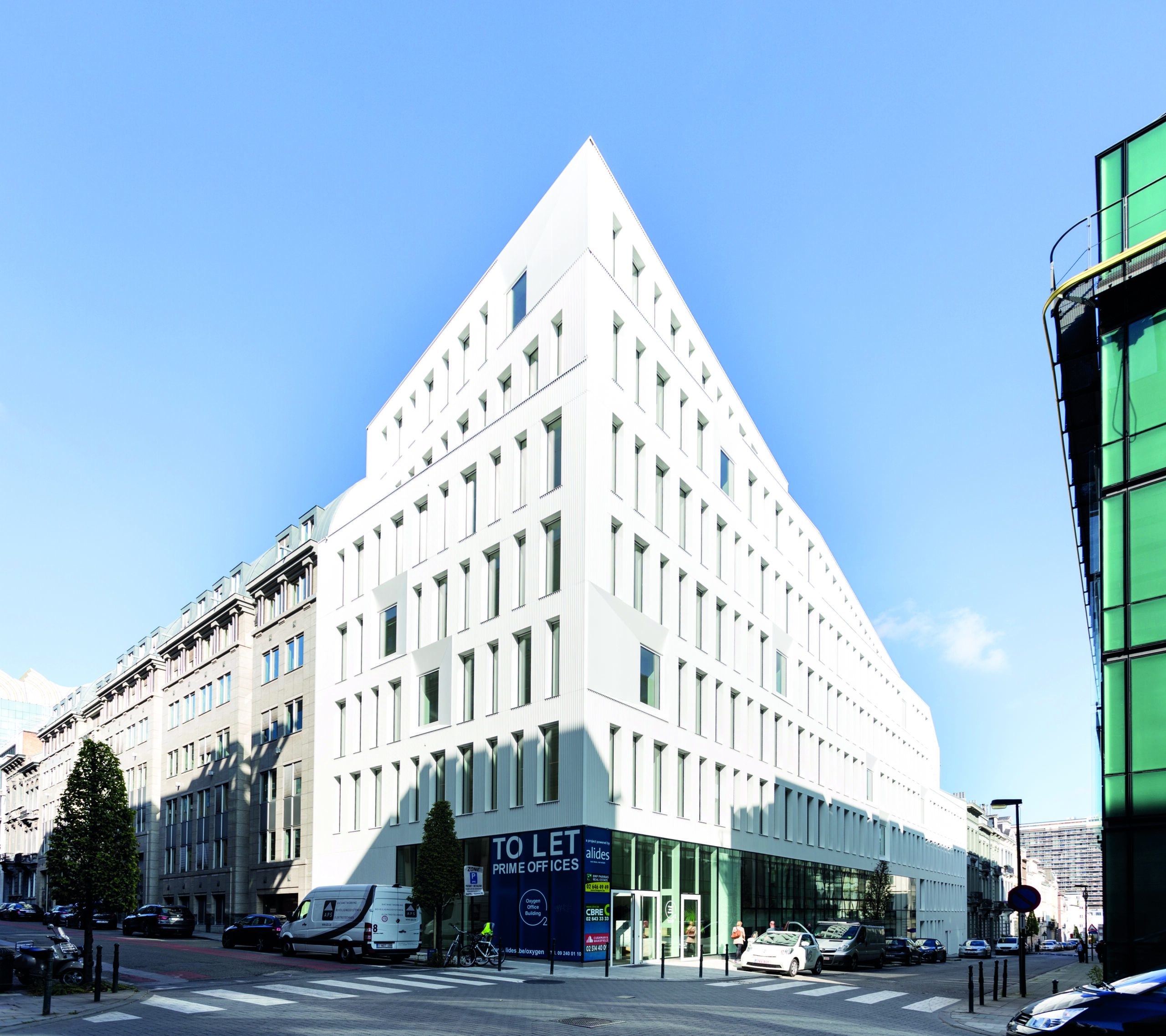Brussels: From Exemplary Buildings to Buildings as Material Banks
Brussels – the Capital of Europe and of Belgium – has reduced energy consumption by 28% and has brought down greenhouse gas emissions per capita by 33% between 2004-2015. This article highlights the EU-funded “Buildings As Material Banks” (BAMB) project and field visits to exemplary buildings in Brussels during the EU Sustainable Energy Week (EUSEW) from 19-23 June 2017.
Over the course of slightly more than a decade, the Brussels-Capital Region has undergone fast and positive change, achieving significant results in the energy sector. Brussels is a densely-populated city with significant population growth and an economic sector oriented towards tertiary functions. Brussels does not have a territory that would permit the mass exploitation of renewable energy sources; the optimal solution therefore is to follow an ambitious policy aimed at improving the energy performance of buildings. In this context, after six calls for “Exemplary Buildings”, Brussels Environment (the environment and energy administration of the region) has taken the lead of an EU-funded innovation project called “Buildings As Material Banks” that addresses waste, recycling, reuse and resource efficiency in the construction sector.
Building As Material Banks (BAMB)
The EU-funded BAMB project comprises 15 partners from 7 European countries to enable a systemic shift in the building sector by creating circular economy solutions. Today, building materials end up as waste when no longer needed, with effects like destroying ecosystems, increasing environmental costs, and creating risks of resource scarcity. To create a sustainable future, the building sector needs to move towards a circular economy. Whether an industry goes circular or not depends on the value of the materials within it: worthless materials are waste, while valuable materials are recycled. Increased value equals less waste, and that is what BAMB is creating – ways to increase the values of building materials.
BAMB will enable a systemic shift where dynamically and flexibly designed buildings can be incorporated into a circular economy. Through design and circular value chains, materials in buildings sustain their value – in a sector producing less waste and using less raw resources. Instead of being to-be waste, buildings will function as banks of valuable materials – slowing down the usage of resources to a rate that meets the capacity of the planet.
To create a sustainable future, the building sector needs to move towards a circular economy.
Launched in September 2015, the project will progress for three and a half years as an innovation action within the EU-funded Horizon 2020 program. Over this period, the partners will develop and integrate tools that will enable the emergence of Materials Passports and Reversible Building Design with the support of new business models, policy propositions, as well as management and decision-making models. During the project, these new approaches will be demonstrated and refined with input from six pilots and feedback from the actors participating in the BAMB Stakeholder Network.
The BAMB consortium consists of:
- Brussels Environment (Project Coordinator)
- Environmental Protection Encouragement Agency (EPEA)
- Vrije Universiteit Brussels (VUB)
- Ronneby Municipality
- Building Research Establishment (BRE)
- Zuyd Hogeschool
- IBM Netherlands
- Sunda Hus i Linköping AB
- Vlaamse Instelling voor Technologisch Onderzoek (VITO)
- Technische Universiteit München (TUM)
- Universiteit Twente
- Universidade do Minho
- Sarajevo Green Design Foundation
- Drees & Sommer
- BAM Construct UK
More information: www.BAMB2020.eu
Putting materials passports and reversible building design to the test in BAMB pilots
Great progress has been made and rich exchanges have taken place with stakeholders via the BAMB Stakeholder Network and Special Interest Group, now counting approximately 275 members. Interactions and input from stakeholders has contributed to shape the development of tools within the project such as important steps being taken to achieve the use of Materials Passports and reversible building design tools. A Software Platform has been developed to support the generation of, and access to Materials Passports, and the first steps have been taken towards generating 300 passports within the project.
In parallel, progress has been made in the development of the Re-use Potential Tool, which will provide a score for buildings’ reuse potential as well as address information about disassembly characteristics of building structures, fostering high quality reuse. These and other tools developed as part of the BAMB project are being put to the test by way of six real-scale construction and renovation pilots. All BAMB pilots have already begun to perform a feasibility study in which the objectives of Material Passports and reversible building design tools are being studied on a theoretical level. The different scenarios and choices will be described, and this study will be used as a basis for prototyping. Currently, two pilots testing BAMB tools are taking place in the Brussels Capital Region.
The BAMB project, means already thinking about « Tomorrow », because our buildings are at the core of the challenges we’re facing, including demographic, climate, environmental, economic, and health challenges. This is particularly true when we consider the fact that almost half of the world population lives in cities and that by 2050, more than 66% of the population worldwide will be a city dweller.
To respond to these challenges, the Brussels Government, at the impulse of the environment minister, wanted a new development model. This new model must be shaped according to the way the city supplies itself, transforms and uses its resources (water, energy, raw materials, food, soil, air). We developed this model with the circular economy in mind. The circular economy aims at rethinking our impact on the environment and the use of resources at all stages of the life-cycle of products and services. BAMB has a mission to nourish the Brussels Regional Program of Circular Economy, in its 2nd updated and improved version in 2018.
Extract of the Speech by Julien Dumont, Representative of the Cabinet of Céline Fremault, Minister of the Government of the Brussels Capital Region, responsible for Housing, Quality of Life, Environment and Energy, January 2017, Annual Meeting of the BAMB Stakeholder Network
Circular Retrofit Lab in Brussels: The VUB Van Der Meeren student housing
In the middle of the central green space on the main campus of the Vrije Universiteit Brussel (VUB), there are clusters of student housing buildings. Although these 352 student rooms were built as a temporary solution in 1973, they are still in use today and have become a cherished icon of the university. However, they have comfort levels that are well below current standards, primarily in terms of technical and energetic quality and accessibility. While the initial plan was to demolish the units after they were to be replaced (by 2020), the university recently initiated an exploration into how the housing units could complement its vision for sustainable development. VUB now wants to demonstrate how reversible building designs can prevent demolition waste when refurbishing existing buildings.

The student housing units designed by Van Der Meeren are ideally suited for this purpose. Each 96 m2 unit (4 rooms, a living space with kitchen, toilet and bathroom) is made by combining four prefabricated concrete support modules, and compatible infill components for exterior and interior walls. Arranging these 24 m2 standard modules in different ways resulted in a variety of room, unit, and cluster configurations. The pilot project will refurbish selected student housing modules in three stages, each one investigating and demonstrating different reversible refurbishment solutions. These units are highly visible in the epicenter of campus and can be used as demonstrators, workshop spaces or pop-up shops.
VUB now wants to demonstrate how reversible building designs can prevent demolition waste when refurbishing existing buildings.
The pilot proposal builds on a preliminary explorative study looking at different scenarios for the reuse and refurbishment of student housing, including life-cycle impact comparison. While the Horizon 2020 project BAMB includes the design and feasibility studies for all three stages of the pilot, only the first stage of the pilot project (the refurbishment lab) will be constructed using BAMB funding. The VUB research team will look for alternative funding for stage two and three.
The H2020 project will act as a catalyst to stage two and three by funding the pilot design and embedding the pilot in a consortium of experienced international partners, significantly enriching the scope. As part of BAMB, the pilot will be used as a test case for Reversible Design protocols and evaluation methods, particularly related to refurbishment. The pilot’s design phase will also test the concept of Materials Passports (a way to track the re-use history of building materials throughout their life-cycles). The entire process will be monitored to map opportunities and bottlenecks for the proper implementation of the circular economy in the construction industry.
EUSEW STUDY TOUR: Towards Near Zero Energy Buildings (NZEB)
Exemplary Construction and Renovation in the Brussels-Capital Region
As in previous yours, Brussels Environment offers the opportunity, during the EU Sustainable Energy
Week (EUSEW) to visit exemplary buildings. This year, the study tour will take place on 20 June with a
visit to a new construction project (office building) and a retrofitting project (swimming pool).
The Oxygen Office Building
The Oxygen Office Building, in the heart of the European Quarter, is an eye-catching architectural addition to the neighborhood. The building presents various unique features such as daylight control and absence detection systems, reduced water consumption and rainwater recuperation techniques, solar panels, extensive roof gardens and easy to use, flexible floors without any central structural elements. Designed by Conix RDBM Architects (www.conixrdbm.com) these sustainable offices comply with the new passive standard of the Brussels-Capital Region. What’s more, the Oxygen Office Building is rated BREEAM ‘Excellent’. The building was also selected for the ‘2013 Exemplary Buildings’ competition run by Brussels Environment.

The VUB swimming pool and student house
The field trip will also include a presentation of the VUB student housing units (in link with the BAMB project above) and to the VUB swimming pool: a high-energy-performance retrofitting with specific attention to sustainability and the circular economy. This retrofitting project is laureate of the “Be.exemplary” call for projects, which in 2016 followed the previous one for “Exemplary Buildings”.